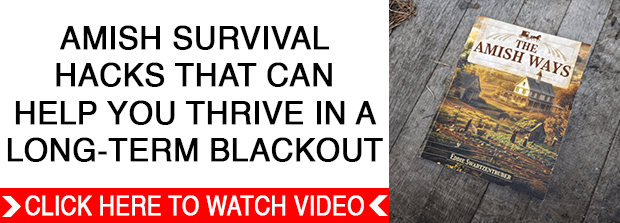In a world where self-sufficiency and preparedness are more important than ever, mastering traditional skills can offer real security. One such skill, often overlooked, is the ability to make soap from scratch. In a grid-down or off-grid situation, hygiene can make the difference between health and illness. Fortunately, the process of making soap requires only a few natural materials: wood ashes, water, and animal fat. This simple yet powerful formula has been used for generations by the Amish and pioneer families.
Understanding how to make your own soap enables you to turn waste into value and ensure cleanliness even in austere conditions.
Ingredients and Tools
Traditional Materials:
– Hardwood ashes (oak, hickory, maple)
– Soft water (rainwater or distilled)
– Rendered animal fat (lard or tallow)
– Coarse salt (optional, to harden soap)
– Rosin (optional, to improve firmness)
Modern Substitutions:
– Sodium hydroxide (100% pure lye)
– Store-bought lard, shortening, or vegetable oils
– Candy or infrared thermometer
– Silicone molds, loaf pans, or lined boxes
Essential Tools:
– Stainless steel, cast iron, or enamel pot
– Wooden spoon or rubber spatula
– Five-gallon buckets or large containers
– Cheesecloth, sieve, or fine cloth
– Protective gear: gloves, goggles, long sleeves
– Bottle of white vinegar for emergency neutralization
Step 1: Preparing the Lye Solution
Traditional Method: Leaching Ashes
Begin by collecting white ash from hardwood fires. Sift to remove any black charcoal. Use a barrel or bucket with a spigot, and line the bottom with straw or small stones. Fill with ash, then pour soft water over it gradually. Let the water slowly drain through, collecting the brown lye liquid beneath.
To test its strength, perform one of two traditional tests: place an egg or potato in the cooled liquid. If it floats with a portion above the surface, the solution is sufficiently strong. If it sinks, boil the solution to concentrate it, then test again. Alternatively, dip a feather in the liquid. If the feather dissolves, the lye is strong enough.
Modern Shortcut: Using Commercial Lye
Measure your water and lye separately. Always add lye to water, not the reverse, to avoid dangerous reactions. Stir slowly with a non-metal spoon until dissolved. The liquid will heat quickly. Allow it to cool to around 100°F before use. This controlled method is more accurate and safer for beginners.
Step 2: Rendering the Fat
If using raw animal fat, cut it into chunks and heat on low until the fat melts. Avoid overheating. Strain the liquid fat through cheesecloth. For extra purity, combine melted fat with equal parts hot water, simmer briefly, then cool. Skim the hardened fat off the top once it separates. Store-bought lard or tallow can skip this step.
Measure about two and a half quarts of rendered fat for a medium batch. Ensure both the fat and lye solution are within ten degrees of each other before combining, ideally around 95 to 100°F.
Step 3: Mixing and Saponification
Cold Process (Modern Method)
Pour the warm fat into a non-reactive container. Slowly add the cooled lye solution while stirring constantly. Continue stirring until the mixture thickens to the consistency of pudding. This stage is called trace. You can use an immersion blender to speed up this step. Once trace is reached, add optional ingredients like essential oils or herbs, and mix evenly.
Hot Process (Traditional Method)
Pour lye solution into a large kettle and heat gently. Slowly add the melted fat while stirring. Maintain a steady boil and stir regularly. Cook until the mixture becomes thick and consistent, often taking several hours. Add salt dissolved in water to help harden the soap, then prepare for molding.
Step 4: Molding and Cutting
Line your soap mold with parchment or wax paper. Pour cold process soap into the mold and smooth the top. Cover with cardboard and wrap in towels to retain warmth. For hot process soap, scoop the thick mixture into the mold and press evenly. Allow it to sit undisturbed for 24 to 48 hours.
Once firm, remove the block from the mold and cut into bars. Wear gloves to protect your skin. Cut the soap while it is still soft enough to slice easily. Place the bars on a drying rack or a flat surface with space between each piece.
Step 5: Curing the Soap
Cold process soap must cure for at least four weeks in a cool, dry place with good air circulation. Flip the bars every few days to ensure even drying. Hot process soap can be used sooner but benefits from a few extra days of curing for improved hardness.
To check if the soap is ready, you can test the pH with strips or perform the old “zap test” by lightly touching the bar to your tongue. A mild tingling means it needs more time. When the soap feels firm and has no zap, it is safe to use.
Safety Guidelines
– Always wear gloves, goggles, and long sleeves
– Keep a bottle of vinegar nearby to neutralize lye
– Work in a well-ventilated space or outdoors
– Use only designated soap-making equipment
– Never add water to lye, always add lye to water
– Clean all tools thoroughly with vinegar and water after us
Practical Uses for Lye Soap – Bathing and Personal Care:
Excellent for removing dirt, oil, and sweat. Some users report improvement in skin conditions like acne and eczema.
– Laundry: Grate into flakes and mix with washing soda and borax for an effective homemade detergent. Pre-treat tough stains with bar soap directly.
– Household Cleaning: Use for scrubbing dishes, floors, and countertops. Lye soap is biodegradable and free from synthetic chemicals.
– Outdoor Relief: Wash with lye soap to remove poison ivy oils or soothe bug bites. Some campers use it as a basic insect deterrent.
– Animal Care: Safe for washing livestock and pets in small amounts. Avoid contact with eyes.
– Utility Cleaning: Lye soap can clean paintbrushes, tools, and oily hands after mechanical work or food preparation.
Conclusion
Homemade lye soap is more than just a cleaning product. It is a symbol of independence, resourcefulness, and preparation. By learning the Amish way, you are connecting with a timeless method that turns basic materials into a valuable tool for everyday survival. Whether for personal hygiene, household cleaning, or trade, your handcrafted soap will become one of the most useful and appreciated items in your prepper toolkit.
Make the time to practice now. In a time of crisis, you will not need a store. You will have skill, knowledge, and soap.


















































































